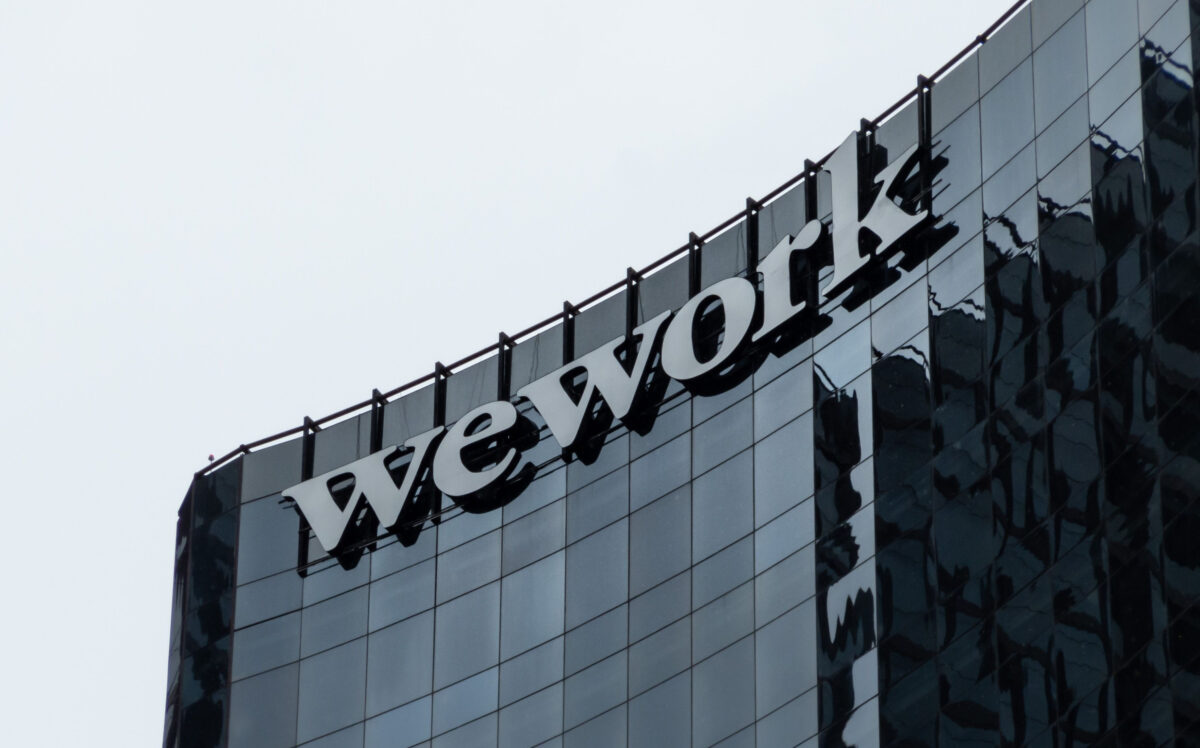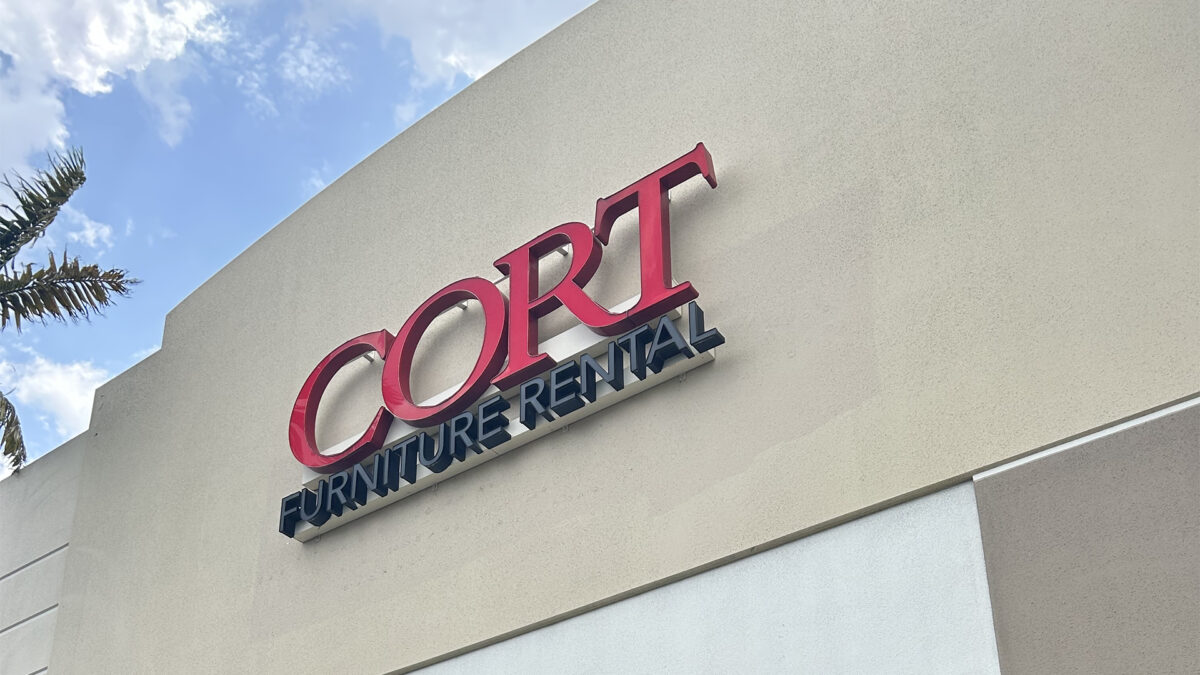Written by: Melanie Jones
I had the absolute pleasure of meeting Andrew Feibelman right in the heart of the COVID-19 pandemic, amidst the bustling city of Boston. Despite the challenges posed by face masks concealing our expressions, it was impossible to miss his unwavering passion and drive emanating as he tirelessly supported his team and customers.
Curiosity got the better of me, and I couldn’t resist the opportunity to delve into the constantly evolving world of project management and business development in the realm of commercial real estate. That’s why I extended an invitation to Andrew to join me for an engaging and thought-provoking CORT Workplace Talk, where we could explore the multifaceted landscape of this industry and shed light on the transformative changes it has undergone.
From the shifting dynamics brought about by the pandemic to the advancements in technology and the rise of hybrid work models, our conversation aimed to uncover the intricate nuances and insights that shape the present and future of project management business development.
So, settle in as we embark on a journey to unravel the secrets, challenges, and triumphs that lie within the realm of commercial real estate and its ever-adapting project management landscape.
The Impact of Technology on Project Management and Business Development
Melanie Jones: Many of us are in a business development role in one way or another. Let’s talk about your focus. How has selling project management services changed in recent days? What’s different?
Andrew Fiebelman: First, thank you for setting this up. I am always happy to meet with like-minded friends! I’ve been in business development for a long time (some may say too long), a subject near and dear to my heart.
That’s a big question. The current state of commercial real estate obviously has had a significant effect on project management, especially in the corporate office market. We’re lucky in Boston to have such deep talent in the educational and healthcare institutions, with many life sciences and technology companies here. Because of that, we’ve been better insulated than most in other markets nationwide.
The advancement of technology within the workplace has changed parts of project management dramatically, especially business development. Our team has managed interviews, walkthroughs, pitches, team huddles, meetings, conferences, events, and so forth virtually for the past three years. That took some adapting. As we leave the COVID experience behind us, we face new challenges. From a business development perspective, the hybrid model has benefits but creates challenges too. I’m a big in-person guy…so I’m happy to reduce the number of virtual meetings…but they still have their place when people are in different geographies or can’t get together quickly. We must all work smarter and determine which type of interaction works best and when.
Leveraging Networks and Building Meaningful Connections in Business Development
Melanie: We are both active CoreNet members, and have been in leadership positions with CoreNet. In-person networking is rebounding. What rewards do you reap from dedicating time and effort to this?
Andrew: CoreNet New England has been instrumental to my personal and professional growth. I’ve invested much time in helping lead our local chapter’s membership committee because I believe in it and the fantastic people who are part of it.
Networks are amazing things. They are there to help whether to solve a problem, uncover an opportunity, and/or connect you with a great person.
We all know you’ve got to put yourself out there; you have to be on the radar. A colleague once told me that you need to “be known and be needed.” For instance, if I meet you at an event and understand how Furniture-as-a-Service can help my clients, I look pretty smart when I’m informed and solve a challenge for a client by leveraging your services. And vice versa for my team’s project management services!
Another tip is to try new things and organizations. Let me shout out to my former colleague and friend Simon Davis and his organization, Purposeful Intent. By attending PI’s recent Boston event, not only was I able to able to connect with new and past industry colleagues (some I’d only met virtually), but I shared an amazing, engaging thought provoking & fun experience over a Boston v. New York cookoff (no need to mention who won, but Boston did😊). You must carve out time to network to keep it fresh, relevant, and growing.
The Rise of Sublease Space and the Importance of Furnished Environments
Melanie: JLL and CORT are great partners across the US. Recently Joey Kline, SVP JLL, joined me in a CORT Workplace Talk, and we created this piece focusing on the all-time highs of available sublease space across the US. I love this quote from Joey, “If you don’t have a furnished sublease, you might as well not market it.” What’s the sublease situation in New England?
Andrew: Unfortunately, millions of square feet of sublease space are on the market; we even have some in Boston. And I agree entirely with Joey’s comment that a space is much more attractive and marketable if furnished.
For landlords, it’s not just about the furniture but the entire space. It’s the necessary infrastructure, the amenities, and the whole experience to attract & retain tenants. What you offer is very interesting, and you have a tremendous opportunity to work with coworking companies like WeWork. Companies that understand how to build the experience will remain more relevant than ever as they have captured the secret sauce that everybody wants. And if a company can’t do that themselves or the landlord is unwilling to, WeWork and similar companies are an excellent solution.
Melanie: Do you know Sarah Travers, CEO of Workbar? I love their strategy. They are a regional coworking provider in Boston. When you buy a membership to Workbar, you can visit any of their eleven locations depending on what you plan to do on a given day and where you are.
Together with Synergy, they created Synergy Suites—a spec suite option for companies who will benefit from regional coworking access to Workbar but also have a small downtown HQ. Once a spec suite is leased, Workbar leans on CORT to design and furnish the space exactly as the tenant wants for as long as they will be in the space. Access to furniture instead of ownership.
Andrew: That’s a terrific example of the creativity companies must adopt to take advantage of the hybrid model and the office experience. It’s all about flexibility, as no “one size fits all” exists.
Transforming Office Spaces: Conversions, Adaptations, and Future Possibilities
Melanie: There is a lot of conversation about converting traditional office buildings into residential and retail. Please share your perspective on this. Are you involved in discussions with landlords considering these massive changes?
Andrew: It’s a hot topic nowadays, as everyone discusses the concept. There was a push in Boston for Office-to-Lab. Now Office-to-Residential is being thoroughly considered in Boston. However, Gensler did a study in Boston, and out of 83 buildings, only ten would realistically work in a conversion. Time will tell.
One exciting hot market is the industrial market, specifically Tough Tech, coined by The Engine at MIT. We’re seeing more tech and industrial manufacturing convergence here in New England with electric vehicles, battery manufacturing, 3d printing, and all things mfg, distribution & warehousing. Last week during a meeting, we discussed converting office space to industrial space. Industrial has historically been the least expensive space, so it’s both scary & interesting to see things flip upside down.
Melanie: For those unfamiliar with The Engine, take a look! Their mission is to provide a more optimistic future and faster, intending to make it easier for Tough Tech to change the world.
Andrew: Absolutely; landlords need to develop new ways to reposition buildings or give clients the money to build better spaces and, of course, hire the right team to manage the project.
Sustainability in Commercial Real Estate: Embracing Green Practices and Eco-Conscious Solutions
Melanie: Good segue here because we have a mutual friend in Rainey Shane. Before her role as Social Sustainability Director, Americas at JLL, she was the Adaptive Reuse Director for the Southeast. I had an interesting discussion with her about sustainability and the SEAM certification that CoreNet published.
In your experience, are you receiving more requests from clients to incorporate sustainable elements into their projects? How does your team stay abreast of the ever-changing requirements for creating a more sustainable world?
Andrew: Absolutely; there is a growing push for sustainability and ESG in the industry, which is fantastic to see. For example, progressive cities like Beverly MA are actively exploring ways to become more sustainable and energy efficient. Additionally, with recent changes in Boston and Cambridge, there is a significant focus on achieving NetZero carbon neutrality.
Another area where sustainability plays a vital role is in decommissioning spaces. Clients are increasingly interested in minimizing waste and reducing the amount of discarded furniture, fixtures, and equipment that end up in landfills. To address these concerns, we work closely with vendors to offer best-in-class recommendations for reusing, donating, and recycling as much furniture and equipment as possible. Our move management background allows us to provide creative and sustainable solutions to our clients.
Melanie: You have a great story of a massive $500 million renovation and reskinning of your building at One Post Office Square in Boston. It took nearly four years, and you mentioned having minimal tenants in the office during COVID helped a bit. Your team knows what it takes to accomplish such a feat. Is it paying off?
Andrew: I think so. We’re over 70% occupancy, close to 80%, with many new tenants such as Goulston & Storrs, Morgan Stanley, and others taking big chunks of space in our newly renovated gem of a building. There’s still availability if you know anyone. 😊 It was indeed a once-in-a-lifetime project for our team,
Melanie: What in commercial real estate interests you the most right now?
Andrew: I’ve always been fascinated by what led me down this rabbit hole of project management. Today it’s all about figuring out how hybrid work is coming together. I mentioned that Fidelity has whole departments come in one week out of the month, with the other three weeks being optional. They have choice and flexibility. Right now, that’s one of the biggest challenge and of great interest to me.
Personal Drive and the Importance of Passion in Commercial Real Estate
Melanie: Last question! I’m pretty energized, but you beat me. What drives you?
Andrew: Aside from the cold brew in our sweet new JLL office at One Post Office Square, what keeps me energized? First off, my family, my fantastic wife Elaine, my 6-year-old daughter Harlyn and my 2-year-old son Jaxton as they keep me on my toes. Secondly, my amazing network, both personally & professionally, including my top-notch teammates at JLL. We have much to solve in commercial real estate these days, and we need to continue coming together to do that. It is fun when you work with your friends and have a passion for the mission. As Mark Twain said, “Find a job you enjoy doing, and you will never have to work a day in your life.”






